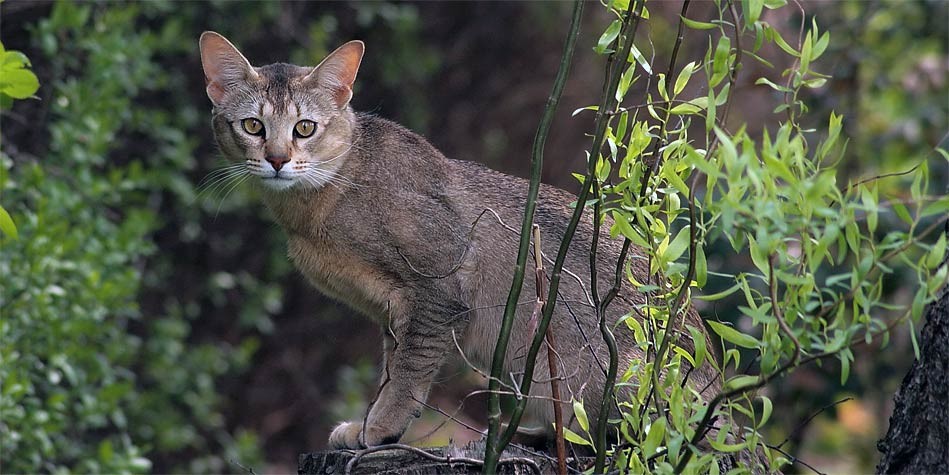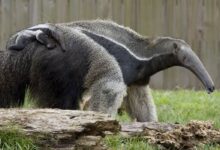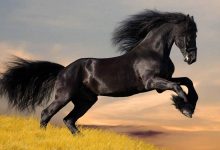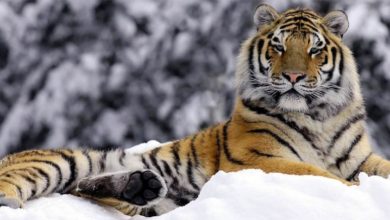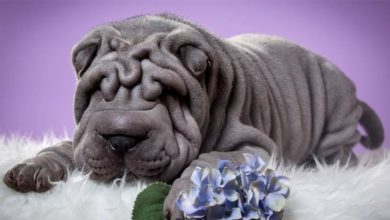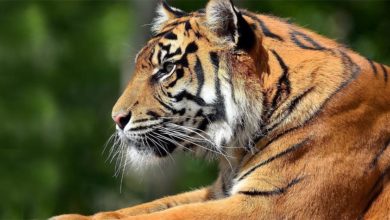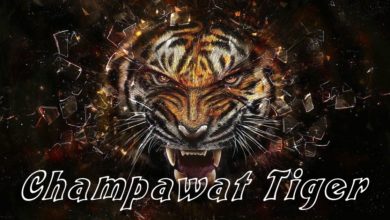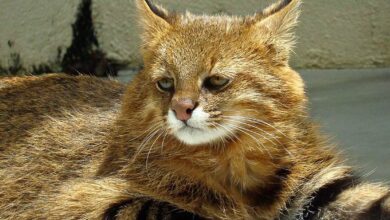The Chausie cat
The Chausie, as an official breed, was created in the 1990s, but similar hybrids could have been walking on Earth for several thousand years. The word “hybrid” is significant here because the Chausie is a combination of the domestic cat and an Asian cat breed, not much larger than an ordinary moggy. How does the Chausie cope in a family? Is it good for an average Smith? One is for sure: the Chausie is a specific breed and certainly not made for lying on the couch.
Classification
The Chausie has not been accepted by FIFe, because it’s a hybrid breed (a crossbred of two species).
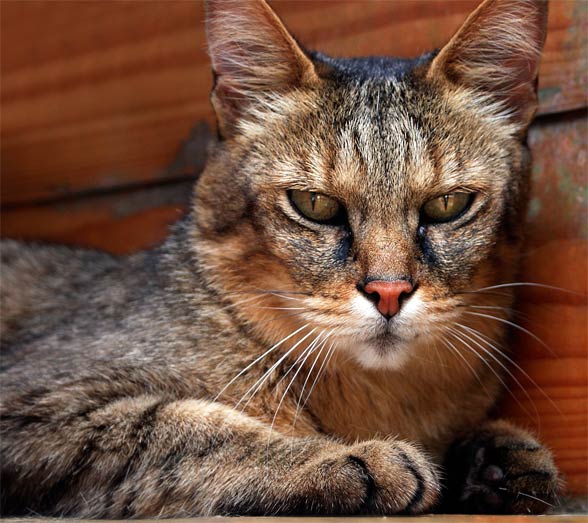
History and origins of the breed
In the 1960s and 1970s, several breeders experimented with crossbreeding of the domestic cat with the jungle cat (Felis chaus). They wanted to create a breed of a wild cat that could live in the house.
However, the Chausie was actually created in the 1990s, when a group of breeders named it and developed the breeding program and objectives. The breeders submitted an application to TICA for the breed to be registered in 1995. Nowadays, these cats are bred in North America and Europe.
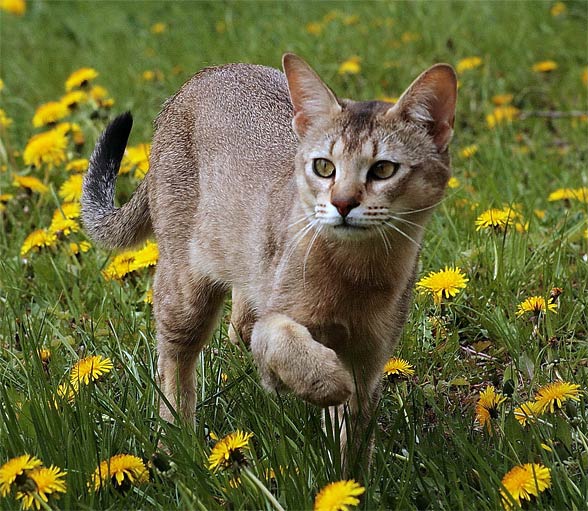
Characteristics
Genetics and appearance
As domestic cats, Chausies are the most authentic in the 4th generation and further. It means that only the fourth generation after the crossbred of the jungle cat and the domestic cat (and, to be more precise, the domestic shorthair or Abyssinian) is fit for being domestic. Such a relationship is marked with “C” or “SBT” on registration certificates for such cats. Cats marked with “A” or “B” are subject to the improvement of their appearance. Moreover, a Chausie has to be at least the third generation after the hybrid crossbred in order to participate in shows.
Chausies may be medium- or large-sized in comparison to ordinary breeds. Most of them are smaller than male Maine Coons but larger than the Siamese cats.
Although they are rather big, they are not too heavy as their bodies are adapted to jumping high and running. Therefore, their bodies are compared to the bodies of basketball players. Thus, their bodies are long, as well as the limbs.
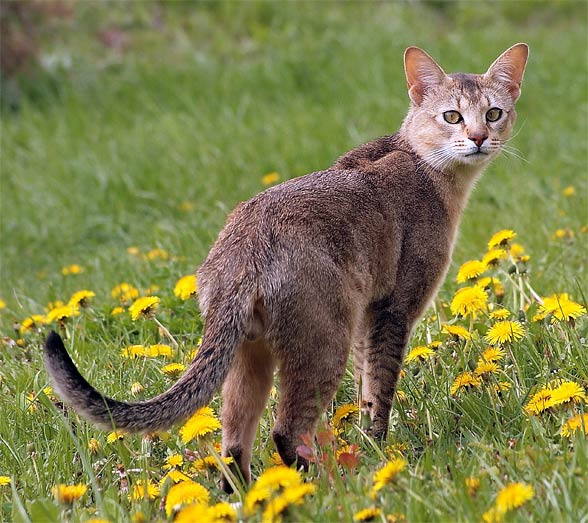
The TICA breed standard accepts three color varieties:
- Solid black – in kittens with this type of coat lighter tabby areas may occur (i.e. ghost marking). Over time, the coat becomes black. Cats spending much time in the sun may have a lighter, slightly brownish coat.
- Black grizzled tabbies – it is characteristic coloration for the Chausie because it has been inherited from the jungle cat. It never occurs in domestic cats, unless they are related to this wild felid. Kittens are born completely black or with elements of a different color on the chin and neck. With age, they resemble tabbies more and more. Over time, the coat changes – the bottom part of every hair is mousie gray, whereas the ends are black.
- Black ticked tabby – black stripes occur on the inside of the upper legs. They are less visible on the outside part of the legs. The tip of the tail is black, and there are black rings along its length. In addition, some markings occur around the eyes. Sometimes, the undercoat is brown, reddish, golden, beige, light gray.
Because the breed is relatively young, it includes many colorations and patterns that have not been accepted by TICA.

Temperament
The Chausie is gregarious by nature and likes fun. Because it is a genetic combination of the jungle cat and the Abyssinian, it is highly intelligent. It also shows high activity and during youth is constantly in motion. As adults, they become quieter but still love fun and intellectual stimulation.
The Chausie does not like solitude
What you need to remember the most is that these cats do not like solitude.
They need the company of other cats or people most of the time. They are also on good terms with dogs, thus, they can befriend them. It may also seem that Chausies create strong bonds with people – they are incredibly loyal, therefore, as adults, they may have problems with adapting to a new home. Their owners should be thus very smart, intelligent, and like cats that are difficult in some way.
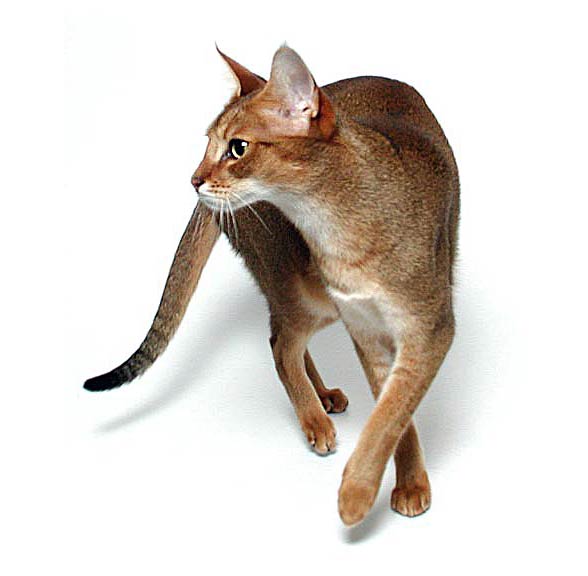
Health
Chausies may inherit shorter intestinal tracts than those of domestic cats from their ancestors. It means that it is harder for them to digest products of plant origin, including cereal, herbs, spices and vegetables. Ingesting of these types of food may cause chronic intestinal inflammation, which eventually leads to a chronic inflammatory bowel.
It also seems that the breed is prone to food allergies. To prevent them, experts recommend giving Chausies high-quality food that includes the smallest amounts of ingredients of plant origin. You may also feed these cats raw or cooked high-quality meat. However, meat does not include all essential nutrients for a cat, and feeding the cat ordinary commercial meat may cause diseases.
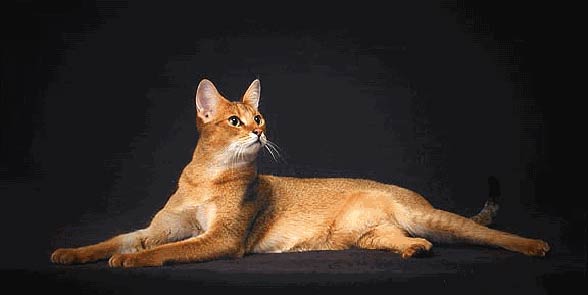
Detailed information / size
Chausie cat
- Weight:
- males 4-6 kg (8.8 – 13 lb)
- females 3-4 kg (6.6 – 8.8 lb)
- Lifespan: 12-14 years
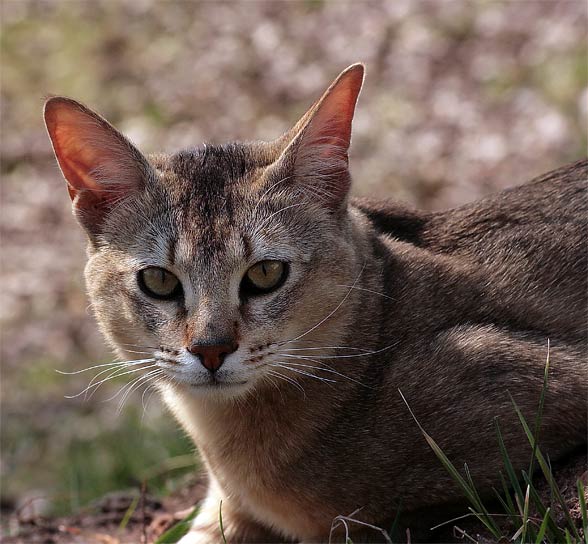
Chausie – interesting facts
- The name of the breed comes from the Latin name of the jungle cat – Felis chaus.
- The first hybrids of the domestic cat and the jungle cat could have been produced even several thousand years ago in Egypt.
- Although the official breeding standards for the jungle cat allow only the Abyssinian and domestic shorthair (mixed-breed) to be crossbred with it, in practice, every cat breed may be used in this type of breeding.


